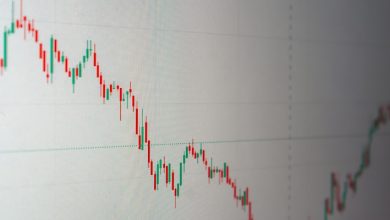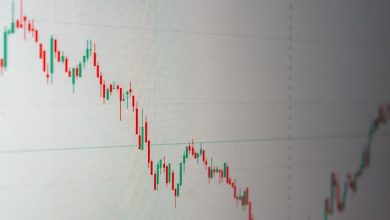How to Leverage Market Sentiment for Better Trading Decisions

- Understanding the role of market sentiment in trading
- Analyzing the impact of emotions on market behavior
- Strategies for interpreting market sentiment indicators
- Utilizing market sentiment to predict price movements
- The psychology behind successful trading decisions
- Avoiding common pitfalls when relying on market sentiment
Understanding the role of market sentiment in trading
Understanding the role of market sentiment in trading is crucial for making informed decisions and maximizing profits. Market sentiment refers to the overall attitude of traders and investors towards a particular asset or market. It can be influenced by various factors such as economic indicators, news events, and geopolitical developments. By analyzing market sentiment, traders can gain valuable insights into the potential direction of prices and adjust their trading strategies accordingly.
One way to gauge market sentiment is by monitoring the volume of trades and the price movements of an asset. High trading volume and price increases typically indicate positive sentiment, while low volume and price decreases suggest negative sentiment. Traders can also use technical analysis tools like moving averages, RSI, and MACD to identify trends and patterns that reflect market sentiment.
Another important aspect of understanding market sentiment is recognizing the impact of emotions on trading decisions. Fear, greed, and herd mentality can all influence market sentiment and lead to irrational behavior. By staying disciplined and objective, traders can avoid falling prey to emotional biases and make more rational trading decisions.
Overall, leveraging market sentiment can provide traders with a competitive edge in the market. By incorporating sentiment analysis into their trading strategies, traders can better anticipate market movements, identify trading opportunities, and manage risks effectively. Ultimately, understanding market sentiment is an essential skill for achieving success in the dynamic world of trading.
Analyzing the impact of emotions on market behavior
Emotions play a significant role in influencing market behavior. It is crucial for traders to understand how emotions such as fear, greed, hope, and panic can impact the overall sentiment in the market. By analyzing these emotions, traders can gain valuable insights into market dynamics and make more informed trading decisions.
When fear dominates the market sentiment, it can lead to panic selling and a sharp decline in prices. On the other hand, when greed takes over, it can result in irrational exuberance and inflated asset prices. Understanding these emotional cycles can help traders anticipate market movements and adjust their strategies accordingly.
Market sentiment is often driven by a combination of rational analysis and emotional reactions. By paying attention to both aspects, traders can gain a more comprehensive understanding of market dynamics. It is essential to strike a balance between logic and emotions when making trading decisions to avoid falling prey to herd mentality or impulsive actions.
Strategies for interpreting market sentiment indicators
When it comes to interpreting market sentiment indicators, there are several strategies that traders can employ to make better trading decisions. By analyzing these indicators effectively, traders can gain valuable insights into the overall mood of the market and use this information to their advantage.
- One strategy is to pay close attention to trending topics and news stories that could impact market sentiment. By staying informed about current events and developments, traders can anticipate how market participants might react and adjust their trading strategies accordingly.
- Another useful approach is to track social media and online forums for discussions related to specific assets or markets. Monitoring these conversations can provide valuable insights into what retail investors and traders are thinking, which can influence market sentiment.
- Additionally, traders can use technical analysis tools to gauge market sentiment, such as moving averages, support and resistance levels, and volume indicators. These tools can help traders identify trends and patterns that may indicate shifts in sentiment.
- It’s also important to consider the overall market environment and macroeconomic factors when interpreting market sentiment indicators. Factors such as interest rates, inflation, and geopolitical events can all impact market sentiment and should be taken into account when making trading decisions.
By combining these strategies and approaches, traders can develop a more comprehensive understanding of market sentiment and make more informed trading decisions. It’s essential to remember that market sentiment is just one piece of the puzzle and should be used in conjunction with other forms of analysis to form a well-rounded trading strategy.
Utilizing market sentiment to predict price movements
One effective strategy for making better trading decisions is to utilize market sentiment to predict price movements. Market sentiment refers to the overall feeling or attitude of investors and traders towards a particular asset or market. By analyzing market sentiment, traders can gain valuable insights into how the market is likely to move in the near future.
One way to gauge market sentiment is by monitoring social media platforms, forums, and news outlets for discussions and opinions about a specific asset. By tracking the sentiment expressed in these sources, traders can get a sense of whether the market is bullish or bearish on the asset. This information can help traders anticipate potential price movements and adjust their trading strategies accordingly.
Another method for utilizing market sentiment is to use technical analysis tools that track sentiment indicators. These tools can provide traders with quantitative data on market sentiment, such as the number of long and short positions taken by traders, as well as the overall volume of trading activity. By analyzing this data, traders can identify trends and patterns that may indicate future price movements.
In addition to monitoring social media and using technical analysis tools, traders can also consider sentiment analysis reports provided by financial institutions and market research firms. These reports often contain valuable insights into market sentiment, including investor sentiment indexes and sentiment surveys. By incorporating this information into their trading analysis, traders can make more informed decisions and improve their overall trading performance.
Ultimately, by leveraging market sentiment to predict price movements, traders can gain a competitive edge in the market and increase their chances of making profitable trades. It is essential to combine market sentiment analysis with other fundamental and technical analysis techniques to develop a comprehensive trading strategy that takes into account all factors influencing price movements.
The psychology behind successful trading decisions
Successful trading decisions are heavily influenced by the psychology of traders. Understanding the psychological factors at play can help traders make more informed decisions and capitalize on market sentiment. One key psychological aspect is the fear of missing out (FOMO), which can lead traders to make impulsive decisions based on the fear of missing out on potential profits. This can result in buying assets at inflated prices or selling assets out of panic.
Another important psychological factor is confirmation bias, where traders seek out information that confirms their existing beliefs and ignore information that contradicts them. This can lead to a distorted view of the market and result in poor decision-making. To counter confirmation bias, traders should actively seek out diverse sources of information and consider alternative viewpoints.
Additionally, emotional decision-making can cloud judgment and lead to irrational trading decisions. It is essential for traders to remain disciplined and not let emotions dictate their actions. Developing a trading plan and sticking to it can help mitigate the impact of emotions on decision-making.
Furthermore, cognitive biases such as overconfidence and anchoring can also influence trading decisions. Overconfidence can lead traders to take on excessive risk, while anchoring can cause traders to fixate on certain price levels or outcomes. Being aware of these biases and actively working to overcome them can lead to more successful trading outcomes.
Avoiding common pitfalls when relying on market sentiment
When relying on market sentiment for trading decisions, it is important to be aware of common pitfalls that can lead to costly mistakes. By understanding these pitfalls, traders can better navigate the volatile nature of the market and make more informed decisions.
- One common pitfall to avoid is herd mentality, where traders follow the crowd without conducting their own research. This can lead to buying high and selling low, as the market sentiment may not always be accurate.
- Another pitfall is confirmation bias, where traders only seek out information that confirms their existing beliefs. It is important to remain open to new information and consider all perspectives before making a decision based on market sentiment.
- Additionally, it is crucial to avoid emotional trading based on market sentiment. Fear and greed can cloud judgment and lead to impulsive decisions that are not grounded in logic or analysis.
- Traders should also be wary of relying too heavily on short-term market sentiment fluctuations. It is important to take a long-term view and consider the bigger picture when making trading decisions.
- Finally, it is essential to diversify your investments and not put all your eggs in one basket based on market sentiment alone. By spreading out your risk, you can better weather market fluctuations and protect your investments.



